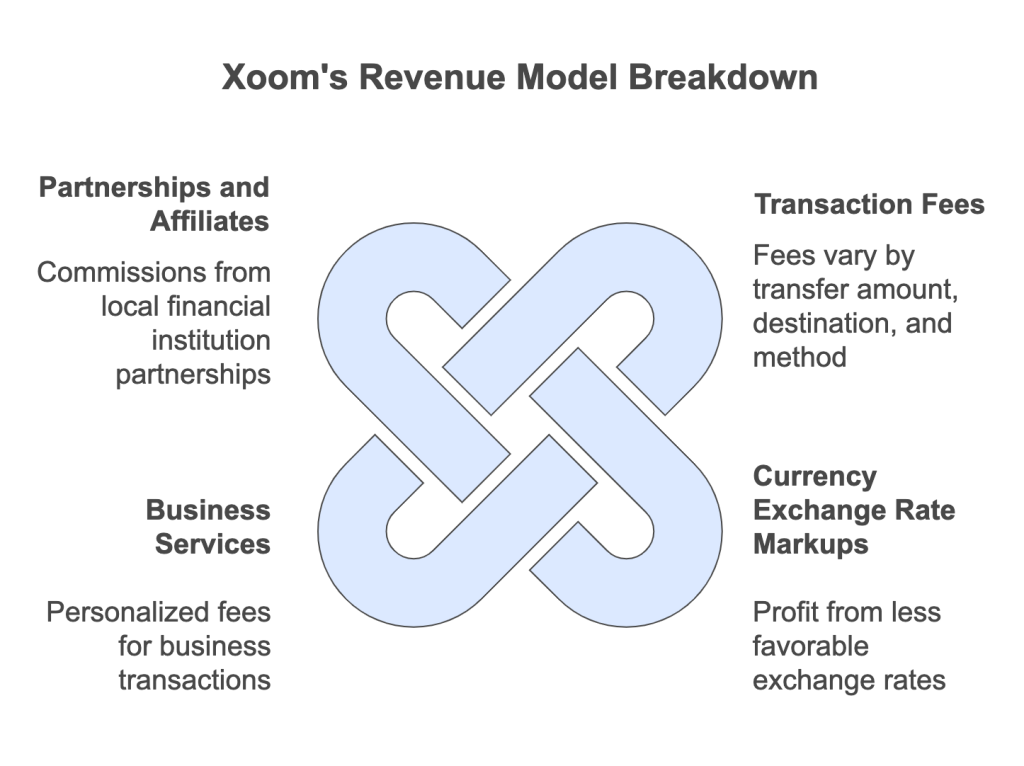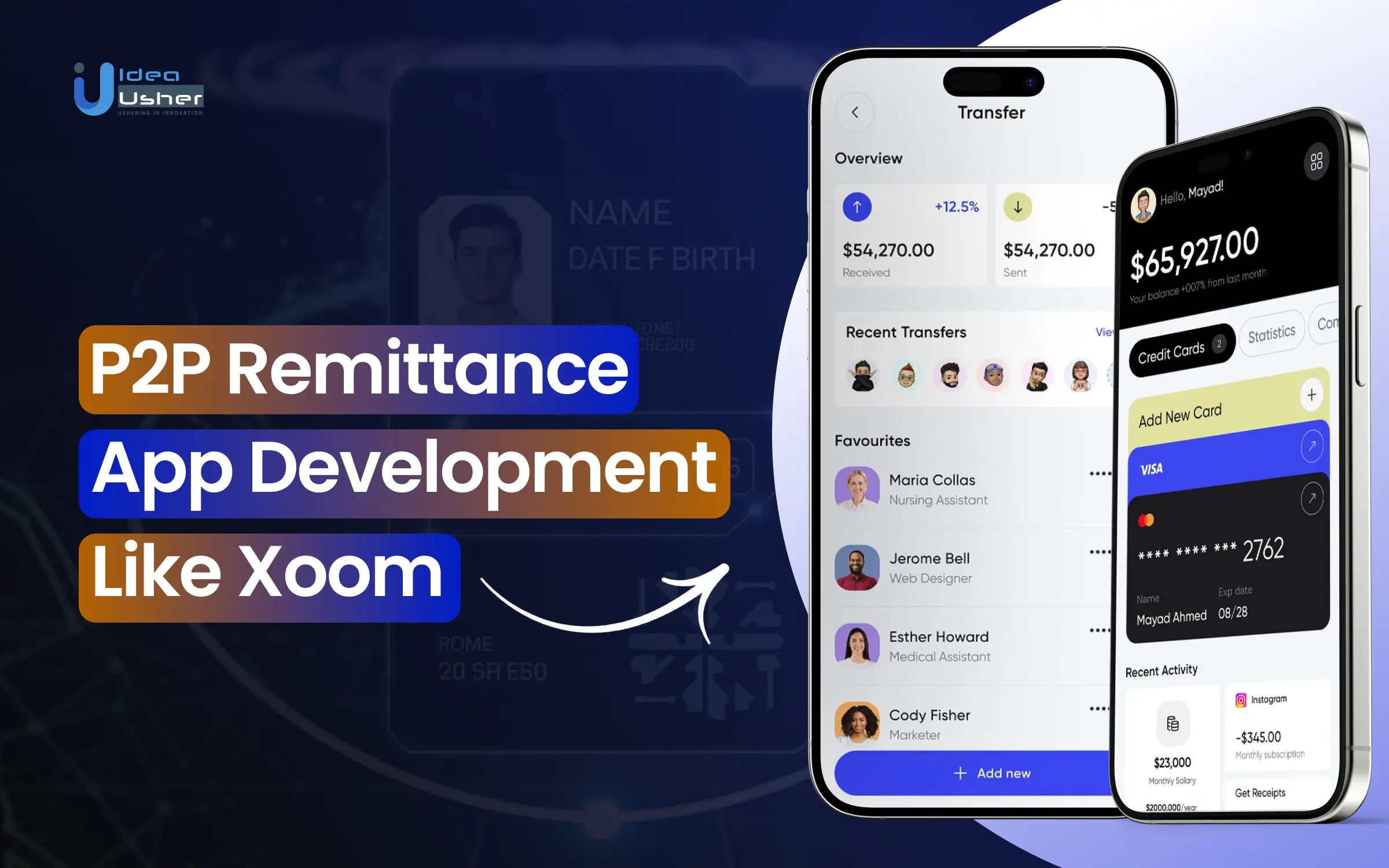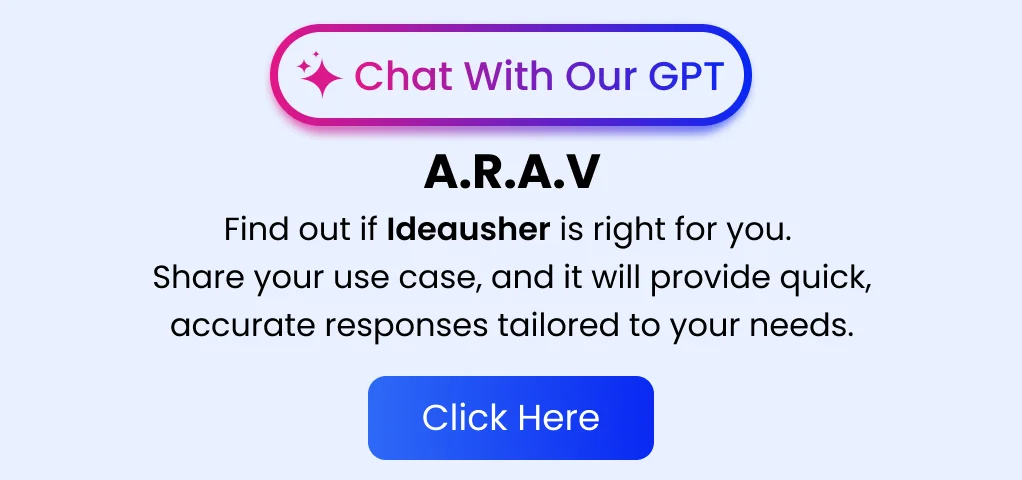The necessity for seamless, fast, and affordable money transfers has never been more critical. Millions of individuals rely on remittance services to support families, pay bills, or invest in opportunities across borders. Traditional methods of money transfer often come with high fees, long processing times, and limited accessibility, leaving room for innovative solutions like peer-to-peer remittance apps. These digital platforms, exemplified by Xoom, provide a more efficient and cost-effective way to send money globally, reshaping the remittance industry and empowering users with convenience and transparency.
Xoom blends competitive transaction fees, exchange rate markups, and a user-friendly interface. Its rapid growth stems from addressing the pain points of traditional money transfer systems while leveraging digital infrastructure to scale globally. This blog aims to guide entrepreneurs through the key steps and considerations in developing a P2P remittance app like Xoom, helping them tap into this lucrative market while delivering value to users worldwide.
Key Market Takeaways Of P2P Remittance App
According to Grand View Research, the global digital remittance market was valued at USD 19.65 billion in 2022 and is projected to grow at a CAGR of 15.6% from 2023 to 2030. Furthermore, in the same year, digital remittance transactions globally surpassed USD 390 billion.
Source: GrandViewResearch
The growing adoption and convenience of digital payments are likely to drive market growth throughout the forecast period. However, limited awareness of digital remittance services and high remittance costs may pose challenges to this growth. Additionally, security concerns, including risks like terrorist financing and money laundering, could further impede the market’s expansion during this period.
According to the latest insights, North America led the market in 2022, contributing over 28.0% of global revenue. Meanwhile, the Asia Pacific region is projected to become the fastest-growing market during the forecast period. To solidify their market presence, prominent players are leveraging strategies such as product innovation, partnerships, mergers and acquisitions, joint ventures, research and development, and geographical expansion. Money transfer software facilitates seamless financial transactions between businesses and their customers, primarily serving B2B clients and finance professionals for efficient online payments.
Work with Ex-MAANG developers to build next-gen apps schedule your consultation now
How Xoom Works
Xoom allows you to send funds to family and friends around the world. Here’s a step-by-step guide to help you understand how it works:
- Sign Up or Log In: To get started, create an Xoom account or log in if you already have one. If you have a PayPal account, you can use those credentials to access Xoom.
- Select Recipient and Country: You can send money to anyone and select the recipient’s country. Xoom supports transfers to a wide range of destinations globally.
- Enter Amount and Delivery Method: Enter the amount you wish to send. Then, select how the recipient will receive the funds, such as through bank deposit, cash pickup, or mobile wallet transfer.
- Provide Recipient Information: Enter the recipient’s details, including their name and, depending on the delivery method, information like bank account numbers or mobile wallet details.
- Review and Confirm: Before finalizing the transfer, review all the details of the transaction to ensure accuracy. This includes the amount, fees, delivery method, and recipient information. Once you’re satisfied, confirm the transfer.
- Track Your Transfer: After sending the money, you can track the status of your transfer. Use the Xoom website or app to follow its progress until it reaches the recipient.
Must-Have Features in a P2P Remittance App Like Xoom
When developing a peer-to-peer remittance app for sending money internationally, it’s essential to ensure the app offers a comprehensive set of features that make the process easy, secure, and convenient. A P2P remittance app like Xoom should include the following key features to enhance user experience:
1. International Money Transfers
One of the core functions of any remittance app is the ability to send money across borders. A top-tier P2P remittance app should support transfers to a wide range of countries. For example, Xoom allows users to send money to over 160 countries, enabling people to connect with loved ones or conduct business globally.
2. Multiple Delivery Options
Flexibility in how the recipient receives the money is crucial. Users should be able to select from various delivery methods, such as direct bank deposits, cash pickups from local agents, or mobile wallet transfers. For instance, Xoom provides options like having the recipient pick up cash in person at a partner location, deposit funds directly into a bank account, or transfer funds to a mobile wallet in real time.
3. Bill Payment
In addition to sending money, a good remittance app should allow users to pay international bills directly. This feature is especially beneficial for people who need to manage utility bills, loan payments, or other services in another country. Xoom allows users to pay bills in multiple countries, helping streamline finances without needing additional payment platforms.
4. Mobile Reloads
Another valuable feature is the ability to add credit or data to prepaid mobile phones, especially for international calls or internet access. Xoom enables users to reload prepaid mobile phones in various countries, allowing recipients to stay connected without needing separate apps or services.
5. Fast and Secure Transactions
Security is paramount when transferring money, and users must trust the platform with their financial information. Xoom incorporates advanced encryption and security measures to ensure that every transaction is protected. Fast processing times are equally important, as users expect their money to arrive quickly, often within minutes, depending on the delivery method.
6. Convenient Access
The best remittance apps offer both online and mobile app platforms, giving users flexibility in how they send money. Xoom provides a seamless experience on both its website and mobile app, allowing users to send money on the go. Whether from a laptop or smartphone, users can initiate transfers at their convenience.
7. Transparent Pricing
Clear and upfront pricing information is a must for any remittance app. Hidden fees can lead to confusion and frustration, but with Xoom, users can see exactly how much they will pay in transaction fees before completing a transfer. This transparency ensures no surprises so that users can make informed decisions.
Why Is Developing A P2P Remittance App Like Xoom A Strong Investment?
Developing a P2P remittance app like Xoom is a strong investment. It combines the growth potential of a booming global market with the ability to generate sustainable revenue from diverse streams. The global remittance market, valued at over $800 billion in 2023, is expected to surpass $1 trillion by 2030. This growth is driven by increased international migration and the demand for fast, affordable digital solutions. By 2030, over 75% of global remittance transactions are projected to be digital, making mobile-based remittance apps a dominant force in the market.
Xoom’s $890 million acquisition by PayPal and extensive operations in over 130 countries highlight the scalability and profitability of digital remittance platforms. With millions of transactions annually and average amounts ranging from $200 to $500, these platforms have proven their capacity.
The fintech sector attracted over $140 billion in global funding in 2023, reflecting strong investor confidence in digital financial solutions. Due to cloud computing and scalable infrastructure, P2P remittance platforms benefit from low operational costs, ensuring profitability even with competitive pricing. Growing trust in fintech and advanced security features further drive adoption, positioning digital remittance apps as a high-reward investment opportunity in the rapidly growing global market.
How Does Xoom Monetize Its Services?
Xoom earns revenue from transaction fees and currency exchange rate markups. Practical examples illustrate how these revenue streams operate, helping to understand this model better.

Transaction Fees
Xoom charges transaction fees for every transfer, varying based on the amount sent, destination country, payment method, and delivery method. For instance, sending $100 to India via a debit card may cost $2.99, while $1,000 might incur an $8.99 fee. Similarly, sending money to Mexico costs $4.99, whereas transfers to countries like Haiti incur higher fees, such as $6.99. Payment methods also influence costs; bank account transfers may have lower fees, like $1.99, while credit cards can incur fees as high as $10.99 due to processing expenses. Delivery methods like cash pickups may attract additional charges.
Currency Exchange Rate Markups
Currency exchange rate markups serve as one of Xoom’s primary revenue streams. The platform provides exchange rates that are slightly less favorable than mid-market rates. For instance, if the mid-market rate for USD to PHP is 56.00, Xoom might offer 54.50 instead. Although the difference appears small, it accumulates significantly; transferring $1,000 could generate 1,500 PHP (~$27) in additional revenue. This strategy enables Xoom to profit from currency conversions without charging separate fees.
Business Services
Businesses outsourcing work to freelancers worldwide leverage Xoom’s trusted platform for efficient transactions. Xoom extends its global reach by forming alliances with banks, retailers, and affiliate programs. These enterprises are often charged personalized fees based on factors like transfer volume and frequency, contributing to Xoom’s diversified revenue channels.
Partnerships and Affiliates
Partnerships with local financial institutions in recipient countries enable Xoom to earn commissions for routing customers to their services. Xoom extends its global reach by forming alliances with banks, retailers, and affiliate programs. This strategy broadens Xoom’s market footprint and enhances revenue diversity.
Steps To Develop P2P Remittance App Like Xoom
Developing a P2P remittance app like Xoom requires a strategic approach to ensure secure, efficient, and user-friendly money transfers. By focusing on technology, compliance, and user experience, you can create a solution that meets the needs of a global audience.
1. Conduct Market Research and Define the Target Audience
Understanding your market and audience is the first step in developing a P2P remittance app like Xoom. Identify your target users, their specific needs, and the challenges they face when transferring money. Define the regions you’ll serve, and research local regulations and payment habits to tailor your app’s features and functionality.
2. Choose the Right Technology Stack
Selecting the right technology stack ensures scalability, efficiency, and security for your app. Use technologies like React Native or Flutter for cross-platform development and backend solutions like Node.js or Python for API and database management. Ensure the stack can handle high transaction volumes as the app scales.
3. Develop Secure and Seamless Payment Infrastructure
Building a robust payment infrastructure is vital for a smooth transaction experience. Partner with global payment providers and local banks to support transfers via bank accounts, mobile wallets, or cash pickups. Implement strong security measures such as SSL encryption, multi-factor authentication, and tokenization to protect sensitive user data.
4. Ensure Regulatory Compliance and KYC Integration
Compliance with local and international financial regulations is essential. Integrate Know Your Customer processes to verify user identities through document uploads and face verification. Implement Anti-Money Laundering systems to detect fraudulent activities and comply with standards like FATF.
5. Design a User-Friendly Interface
An intuitive interface is key to user satisfaction. Create a simple, easy-to-navigate design with features like fast onboarding, minimal steps for transfers, and multi-language support. For instance, users should be able to register with an email or phone number and send money within a few clicks. Offering tutorials or demos can help first-time users quickly adapt to the app.
6. Implement Fast and Transparent Transactions
Users expect remittance apps to process payments quickly and transparently. Develop systems that enable real-time or near-instant transactions and provide clear visibility at every stage. Include features like transaction tracking and upfront display of fees and exchange rates.
7. Integrate Multiple Delivery Options
Flexibility in delivery methods enhances user convenience. Support bank transfers, cash pickups through partners like Western Union, and mobile wallet transfers to platforms such as GCash or Paytm. This ensures accessibility across regions and user preferences.
8. Test, Launch, and Optimize
Thorough testing ensures your app is reliable and user-friendly before launch. Conduct beta tests to identify bugs, payment issues, or usability concerns. Focus on testing areas such as payment accuracy, KYC verification, and app security. Post-launch, gather user feedback to improve features and performance.
Cost Of Developing A P2P Remittance App Like Xoom
| Stage | Tasks | Cost Range ($) |
| Research and Planning | Market research, competitor analysis, feasibility study, defining scope and features | 1,000 – 5,000 |
| UI/UX Design | Wireframing, prototyping, visual design, user interface design | 2,000 – 8,000 |
| App Development | Front-end development, back-end development, API integration | 5,000 – 30,000 |
| App Features | User registration, user profiles, money transfers, payment gateway integration, currency exchange, transaction tracking, notifications, security, customer support | 2,000 – 15,000 |
| Testing & Quality Assurance | Functional testing, security testing, usability testing, performance testing | 1,000 – 5,000 |
| Deployment & Maintenance | App store submission, ongoing maintenance, updates | 1,000 – 5,000 |
Total Estimated Cost Range: $10,000 – $100,000
Factors Affecting the Cost Of Developing a P2P Remittance App Like Xoom
- Payment Gateway Integrations: Integrating various payment gateways for multiple regions can add costs. Different payment systems (e.g., PayPal, Stripe, local payment methods) may require different integrations and API configurations, affecting the overall price.
- Cross-Border and Currency Exchange Functionality: Building an app that handles multiple currencies and ensures real-time currency exchange can increase its complexity. You’ll need to integrate APIs for exchange rates, and the app must comply with international payment regulations, which will increase the development cost.
- UI/UX Design Complexity: A user-friendly interface is essential, and designing an intuitive, multilingual, and region-specific interface can require extra design effort. The more advanced and seamless the user experience, the higher the cost of the design phase.
- Third-Party Integrations: Incorporating third-party services for fraud detection, payment processing, identity verification, and other functionalities adds to the cost. Each integration requires development time, API connections, and potential licensing fees.
Conclusion
I believe developing a P2P remittance app like Xoom requires a well-planned strategy that combines market research, advanced technology, and strong security protocols. The complexity of features, regulatory compliance, and the need for a seamless user experience all contribute to the overall development cost. By prioritizing these key elements and working with an experienced development team, you can create an efficient, secure, and scalable remittance platform. Whether you’re looking to provide fast, low-cost transactions or cater to specific regional needs, the right approach to development will ensure your app’s success in the competitive remittance market.
Looking To Develop A P2P Remittance App Like Xoom?
At Idea Usher, we understand how important it is to create a P2P remittance app like Xoom that your users can trust and rely on. With over 500,000 hours of coding experience in app development, we bring a wealth of expertise and a personal commitment to helping you build a seamless, secure, and efficient platform. Our team will work closely with you every step of the way to ensure your app meets the highest standards for speed, security, and user experience while also complying with global regulations. We partner with you to bring your vision to life and create a solution that makes cross-border money transfers easier and more accessible for everyone. Let’s make this journey together and create something that truly stands out!
Work with Ex-MAANG developers to build next-gen apps schedule your consultation now
FAQs
How do I ensure my P2P remittance app works in multiple countries?
To ensure cross-border functionality, you need to integrate with local payment gateways, offer multi-currency support, comply with international financial regulations, and localize the app for different languages and currencies.
What payment methods can be integrated into a P2P remittance app?
Your app can integrate payment methods such as credit/debit cards, bank transfers, mobile wallets, and even cryptocurrency. Therefore, it’s essential to offer flexible options based on your target regions and user preferences.
How can I make my app user-friendly?
Focusing on a clean, intuitive UI/UX design is key to a user-friendly app. Minimizing the number of steps to complete a transaction and providing easy navigation helps improve the overall user experience.
What is KYC, and why is it important in a P2P remittance app?
KYC (Know Your Customer) is the process of verifying users’ identities to prevent fraud and comply with financial regulations. It’s crucial for ensuring the security of transactions and building trust with users.




















